Tuk Tuk Tours
Explore Bangkok by the iconic tuk tuk
Sure, it might be Thailand’s show-stopping curries, stir-fries, and salads that get most of the glory, but the country also has countless varieties of delicious, exotic and healthy Thai fruits that we practically live for. Some are well known, others much less so.
Whether you enjoy them in a fruit salad, blend them into a shake or smoothie, stir them into a savoury dish, or just enjoy them as nature intended, these are our favourite 20 Thai fruits that we are proud to present.
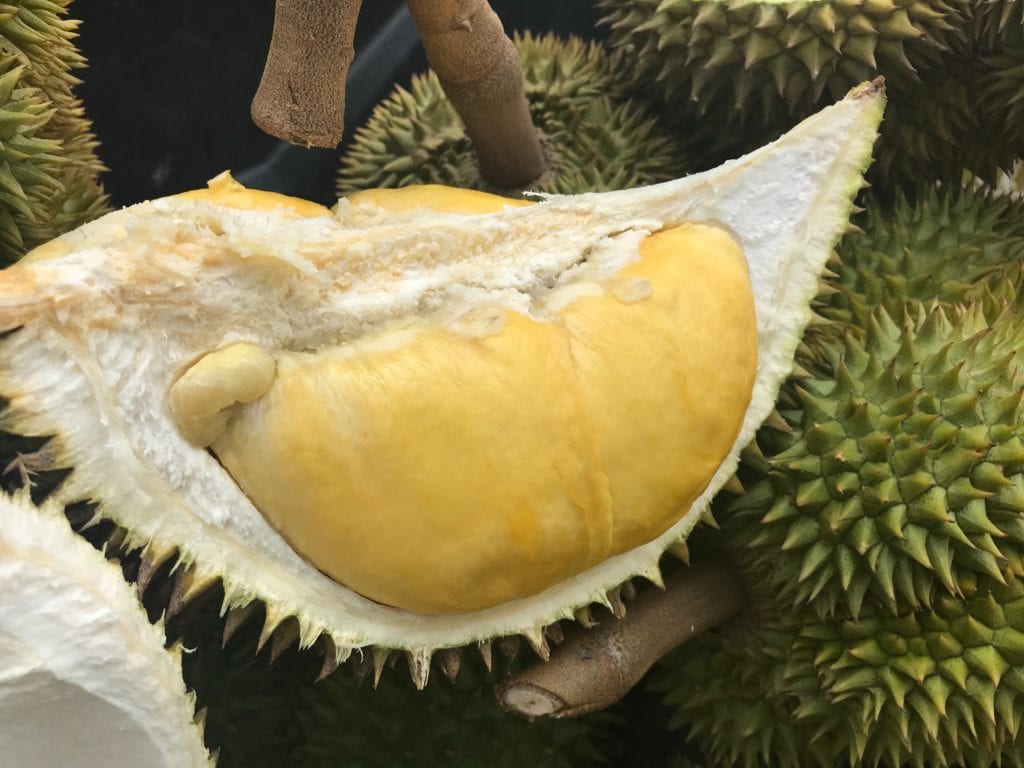
The so-called King of Fruits, the durian has a big reputation – and not always for great reasons. It’s banned on air-conditioned public transport both in Thailand and elsewhere. Your hotel probably won’t be too impressed if you take some back with you, either. Since that spiky exterior guard’s meaty flesh that’s seriously stinky. If you can bring yourself to have a taste, you might join its legion of fans – or you might not. As the durian’s flavour is just as divisive as its smell. Durian is commonly sold by weight on the streets of Bangkok and elsewhere around Thailand.
You can also enjoy it in dessert form as a variant to the popular mango and sticky rice. It also makes for a deliciously meaty ice cream. For those who want a milder flavour try durian chips.
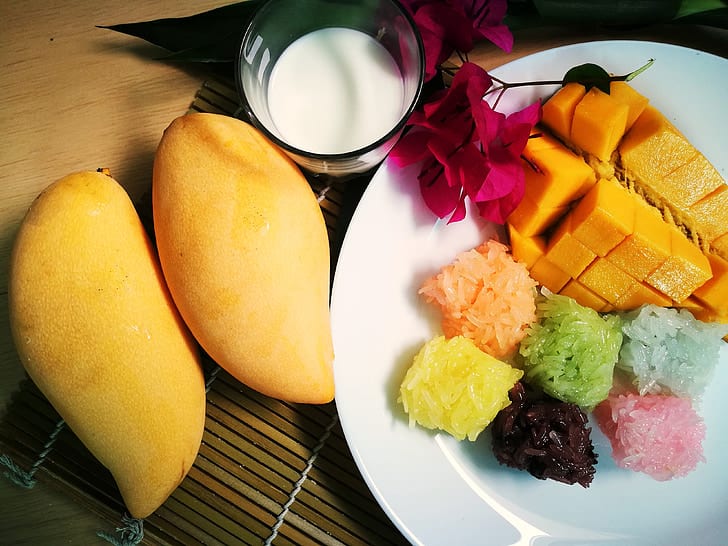
Thai mangoes are perhaps most famous for their part in the enormously popular dessert of mango and sticky rice, where they’re combined with rich coconut milk. Along with other fruits, mangoes are also a common ingredient in the sweet, shakes and smoothies that are blended up at street stalls in Bangkok and all over Thailand.
That’s just the ripe mango, though. Crisp, unripe green mangoes – in both sour and non-sour varieties are commonly enjoyed sliced up and dipped in a fiery concoction of dried chilli and sugar. Or perhaps with one of a variety of chilli-based dips (known as nam prik) containing anything from shrimp paste (kapi) to rotten fish (pla rah) and ‘pimp’ water beetles (maengda). In our experience, the latter has an apple-like flavour!
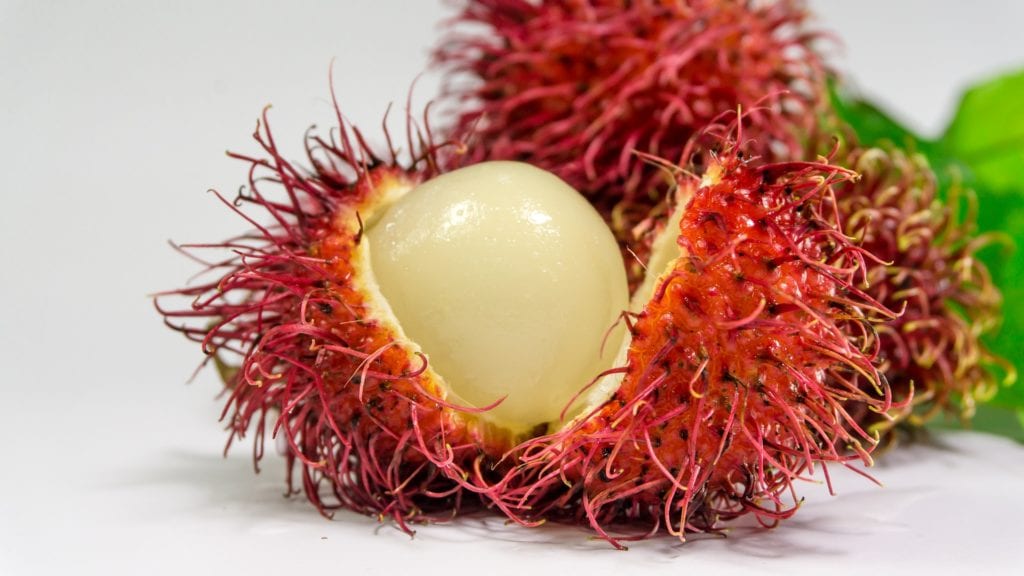
Once you pop the hairy, red-and-green shells with either your thumbnail or a knife, you’re rewarded with sweet, juicy, lychee-like flesh on the inside with a small stone at the centre. As well as being eaten as they are, rambutans are fairly commonly added to grilled duck red curry – this dish more traditionally calls for pineapple chunks, but whole or halved deseeded rambutans are a lovely alternative, while grapes and lychees can also be used.
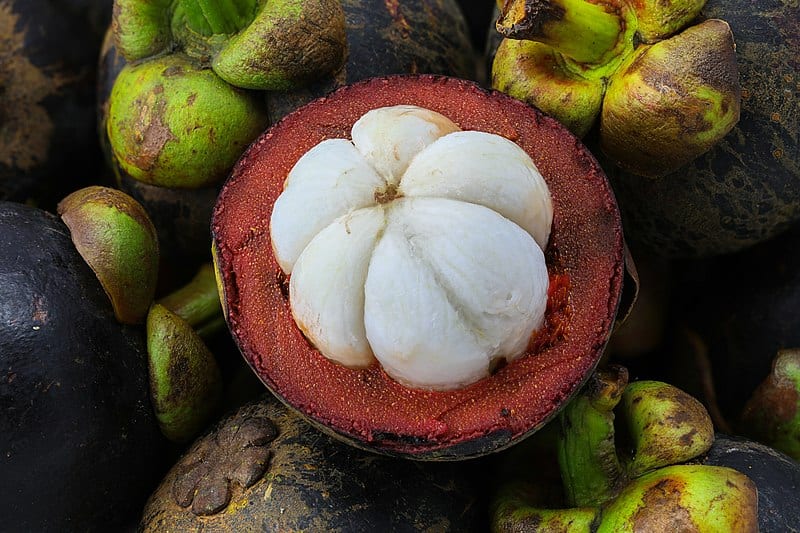
Known as the queen of fruits to accompany durian, mangosteens have sweet and tangy, white fragmented flesh inside deep purple shells. The inside of which can stain your clothes if you’re not careful! Here’s a little-known piece of mangosteen trivia: as if the fruits were created with their own labels ready for the supermarket shelves, a quick look at the number of petals on the underside of a mangosteen’s exterior will tell you how many segments of the flesh are hidden away inside. Nature works its incredible magic once again!
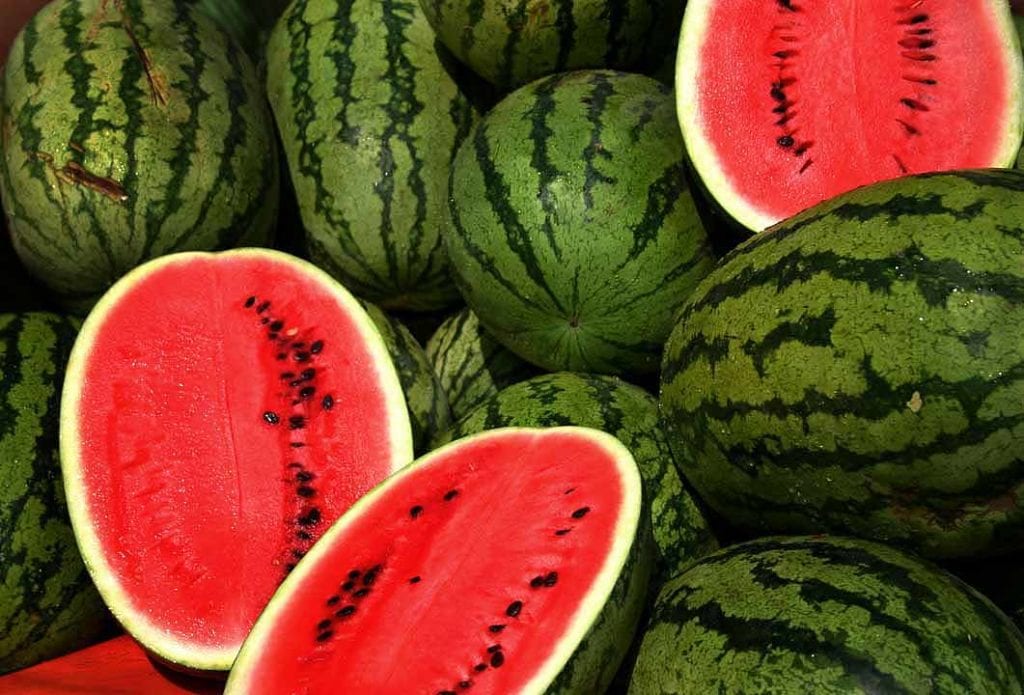
There’s little quite as refreshing as biting into a hunk of hydrating fresh watermelon. As an added twist, Thai watermelons come in two colours! Red watermelons are the most common, like those usually exported overseas. But if you look closely you might just come across a different variety, with the same exterior but beautiful bright yellow flesh inside. Entirely naturally!
Like mangoes, watermelons are another especially common ingredient in fresh fruit shakes and smoothies. Yet, they’re just as delicious enjoyed as they come, sliced into pieces and dipped into sugar and perhaps dried chilli.
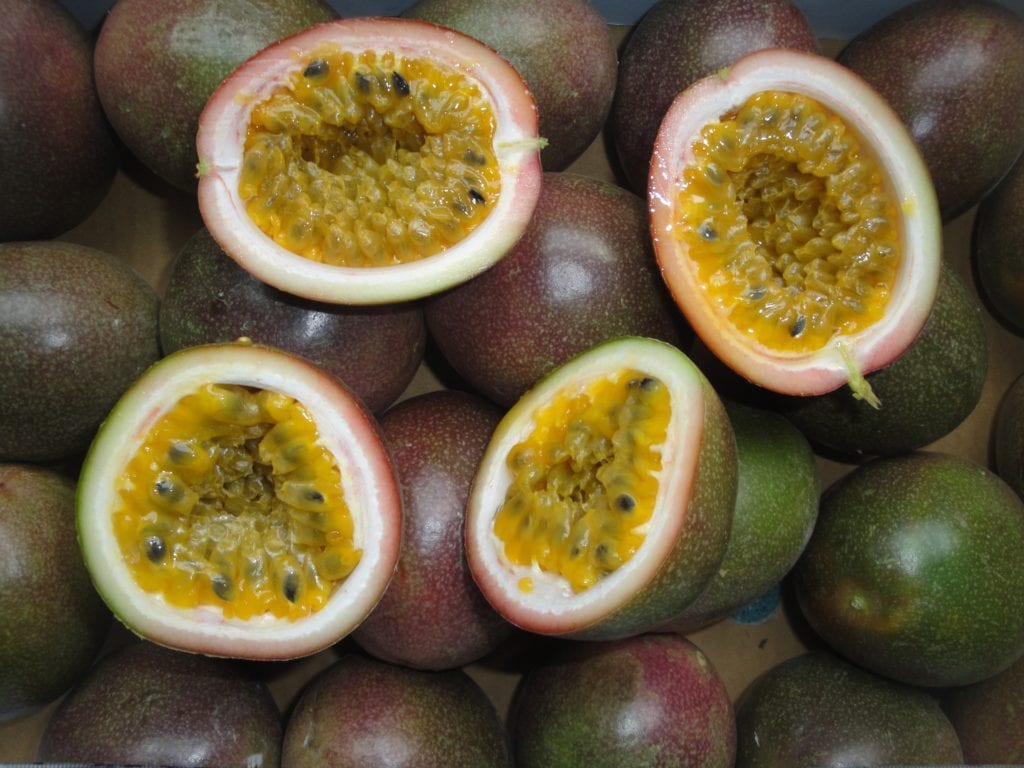
Though available in Bangkok, passion fruits are far less commonly seen here than they are in northern Thai cities like Chiang Mai, where the fruit is grown with the help of the cooler climate, particularly at higher altitudes. These brown, golf-ball-sized fruits are filled with bright yellow-orange flesh and juice that’s sweet but also overpoweringly tangy and sour. The edible seeds add a pleasant crunchy texture, and the whole experience of eating a truly fresh passion fruit is incomparable to the flavours of even the best quality bottled juice.
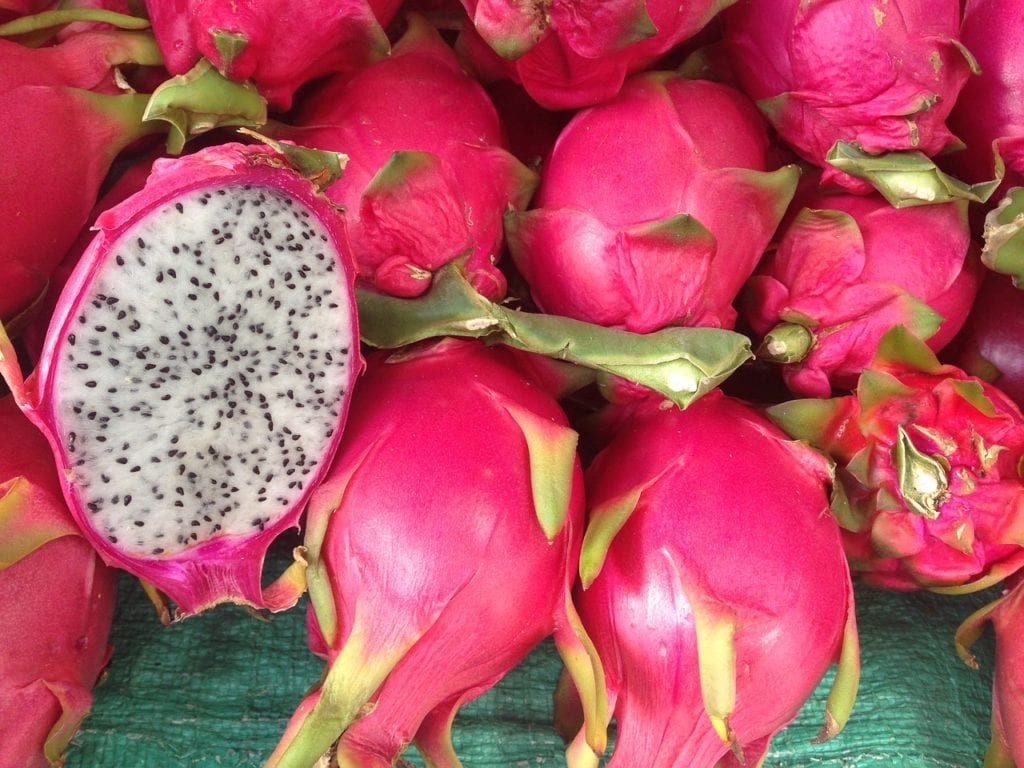
Another Thai to come in two different colour varieties, dragon fruits are a similar size to the average mango and have a bright red-pink exterior with green shoots. Inside, Thai mangosteens most commonly have white-grey flesh, but a less common variety has more striking red-pink flesh.
In both types, the flesh is dotted with crunchy black seeds, which are edible. This flesh is somewhat sweet, arguably relatively bland, yet still delicious. As well as being eaten as-is. It’s commonly juiced or added in chunks to shakes and smoothies.
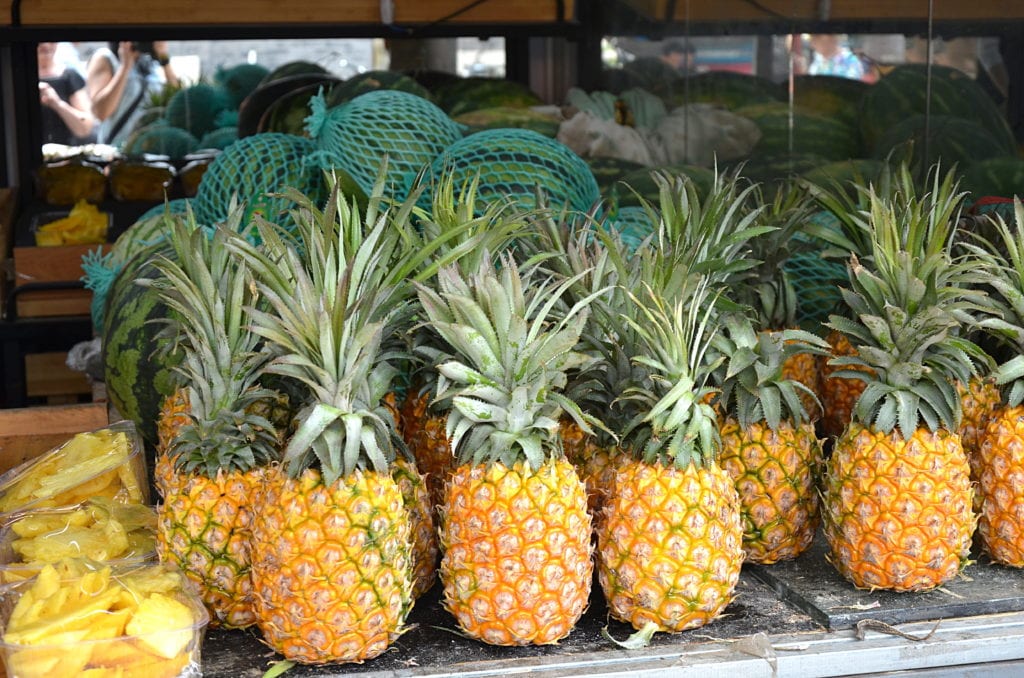
Pineapple is commonly sold ready-to-eat in bags by street vendors in Bangkok and elsewhere in the country. Whole fruits are available too. They’re most widely grown in the upper southern part of Thailand and are sold both at markets and from pick-up trucks piled high with fruits and parked up at the side of the road. Smaller, extra-sweet fruits are a particular specialty.
Also, pineapple is eaten as a smoothie and fresh dipped into sugar and dried chilli. And they are thrown into dishes like pineapple fried rice and grilled duck red curry, where the zingy acidity of the pineapple cuts through the fat in the meat to balance the dish’s flavour.
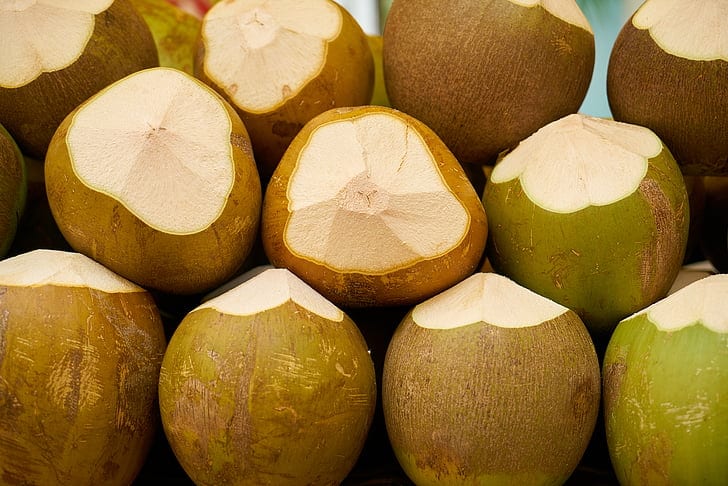
Who could forget the humble coconut? Grown en masse in southern Thailand, including on the coconut island of Koh Samui. These vitality-boosting beauties have become renowned the world over for their healthy credentials. Rich coconut milk – produced by pressing the flesh through a fine mesh – has long been used in Thai curries, and the likes of coconut oil and coconut butter are increasingly popular as healthier alternatives to conventional cooking fats.
Coconut flesh is also often thrown into fruit smoothies, but perhaps the best way to enjoy a coconut is simply to crack the top with a mallet, dip in a straw, and soak up that delicious, thirst-quenching coconut water. There’s nothing in the world like it – just don’t forget to use a spoon to tuck into the meaty flesh afterward, too!
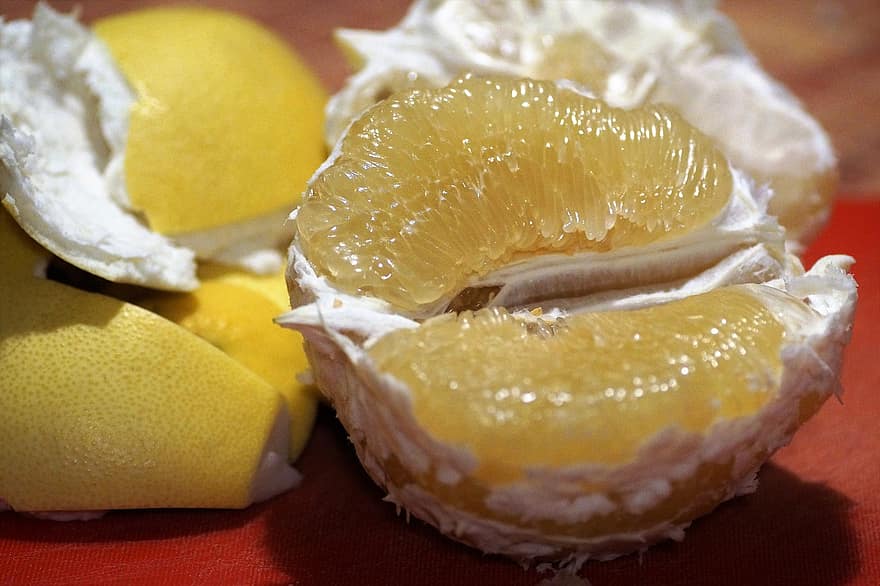
Pomelo is known as Som O in Thailand. It is a very large citrus fruit similar to a grapefruit different in taste and skin. Pomelo is sourer and sweeter (some is also a bit bitter) and the skin is very thick. There are many varieties of pomelo and each is grown in different areas. You can find them all year round with various sizes. Some varieties are even large as a football. They are best eaten fresh with “prik glua” – Thai salt chili sugar dip.
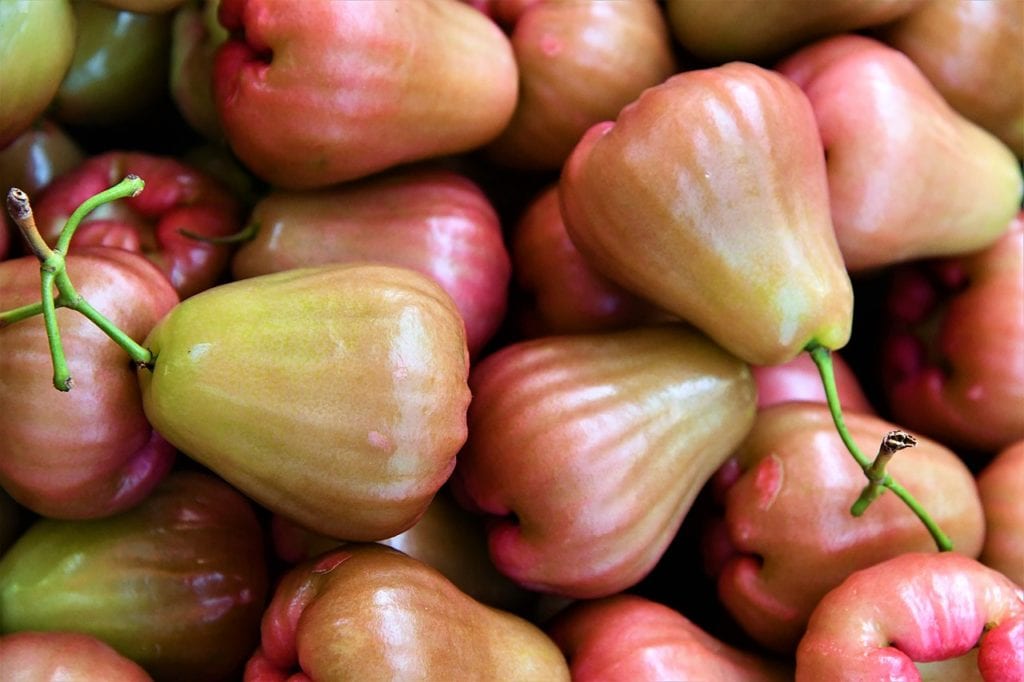
Chompoo or Rose Apple is a bell-shaped fruit that looks quite similar to a small pear. It has a crunchy and juicy texture which also can be eaten all including the skin. Rose apples have several varieties with pink and green colours. The most commonly found is pink skin (actually it is almost red). Its fiber is very beneficial for health. A very healthy and extremely fresh fruit!
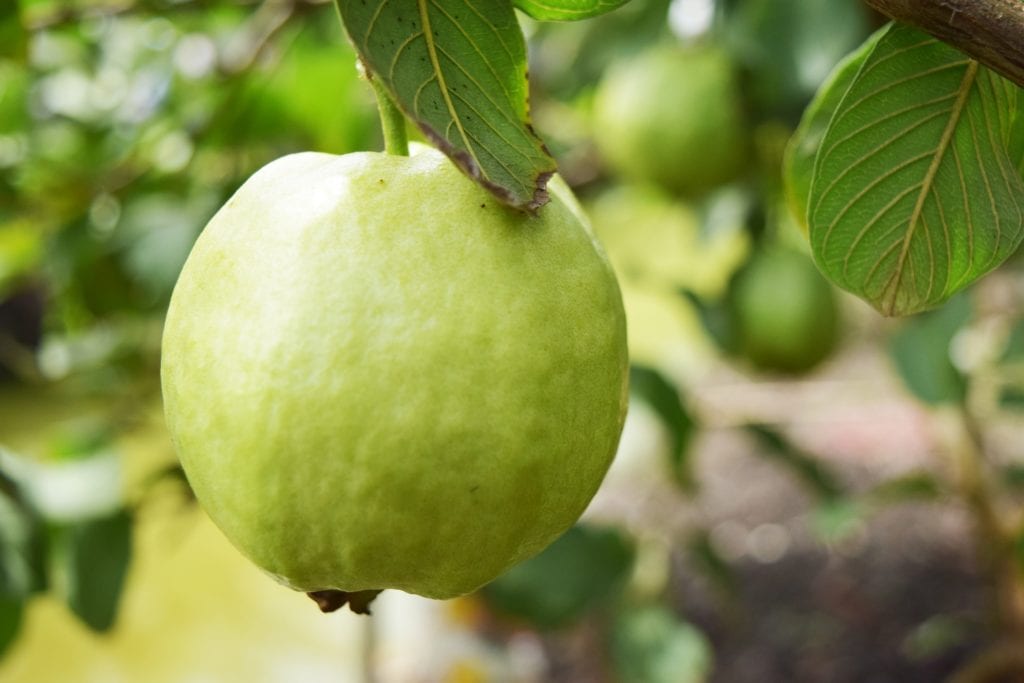
A fruit imported from central America and the West Indies for hundreds of years ago. Guavas in Thailand are available all year round. They are best eaten unripened – crunchy. But still, lots of people prefer the soft texture when it is ripe. They very go well together with “prik glua” – salt, sugar, and chili dip. Moreover, the term “farang” in Thailand also used to describe European and American people. Which believe the word is derived from “Frank” during trading with French in the Ayutthaya period.
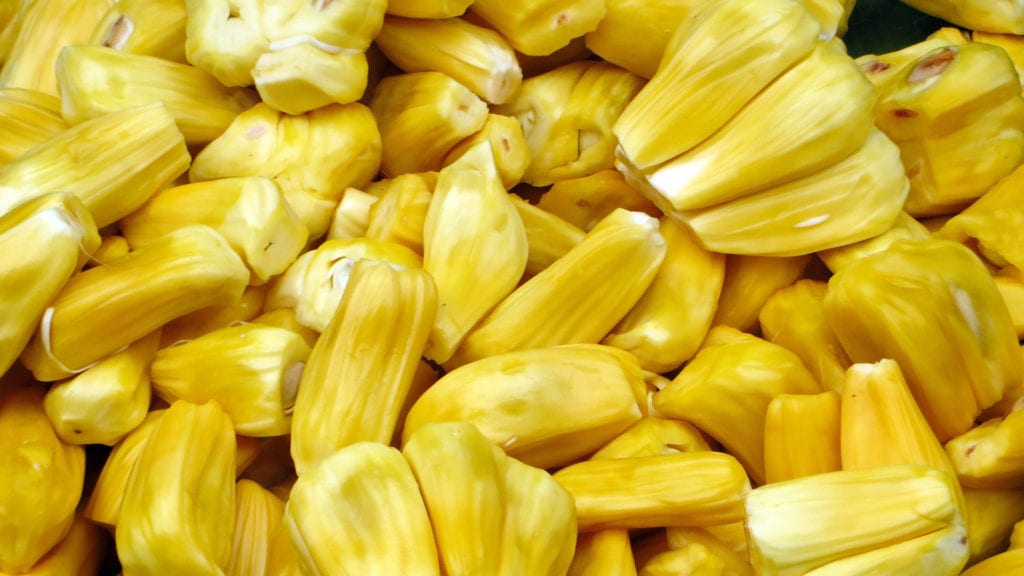
The largest fruit in Thailand, often weigh in at 20 – 30 Kilos. Khanoon or Jack fruits are similar to Durian as they are big and very difficult to open. Inside, there are multiple sections of a waxy and golden yellow meat covering a large seed. The flavor is very unique; sweet, not juicy, and gives the feeling of chewing gum (but it is not sticky). It is delicious but difficult to be described, so you should try yourself.
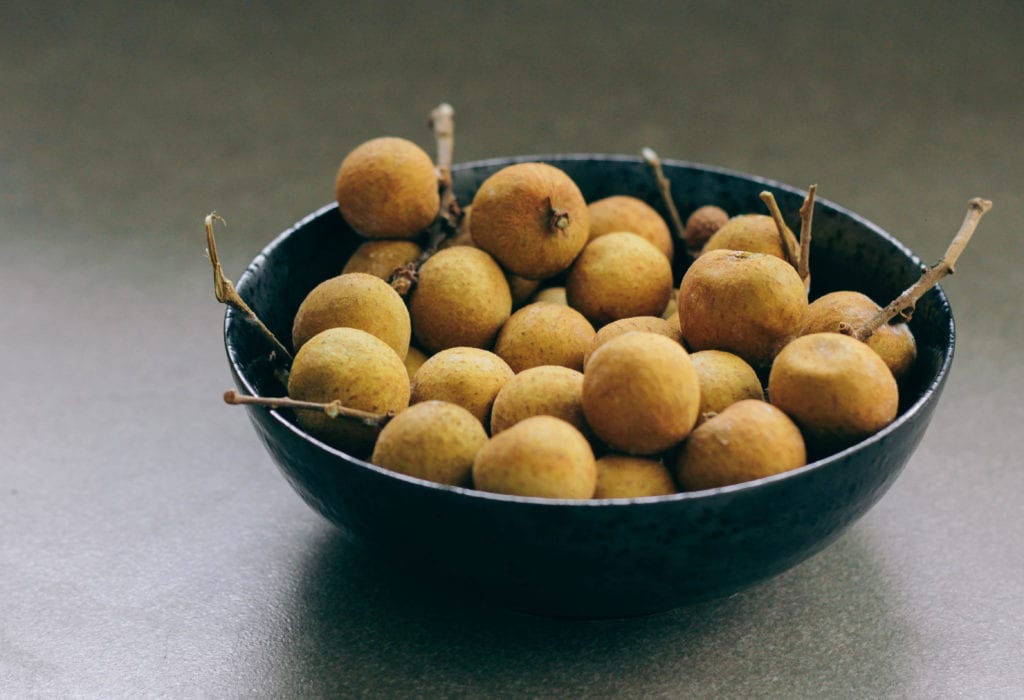
Dimocarpus longan is commonly known as the longan or Lam Yai in Thai. Once peeled off the skin the flesh is white and translucent very similar to lychee but sweeter, juicier, and has grape-like texture. The flesh also covers a large black seed. Longans mostly are grown in the North of Thailand – Chiang Mai, Chiang Dao, and Chiang Rai. And you will find them a lot in markets from June to August. Research shows that longans help reduce risks for cancer, relieve stress, and help with digestion. Refresh and good for health!
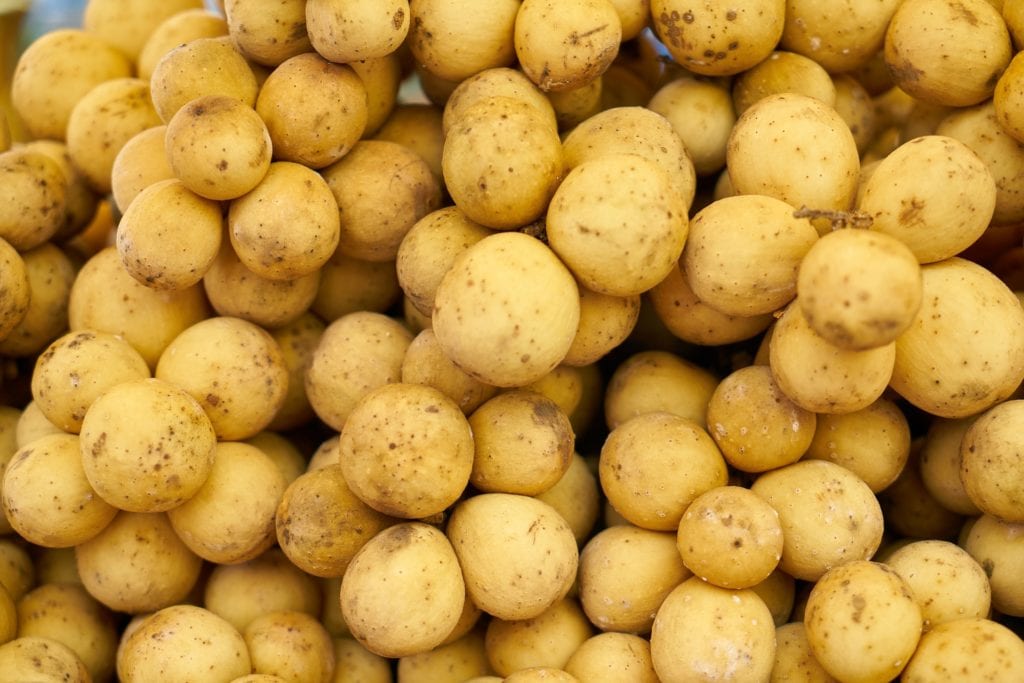
Longkong is a small, round, seasonal fruit – available between July and October. It tastes sweet, sour, and pretty juicy. The appearance is very similar to the Longan. Many people get confused when seeing them in the same stall. However, when you touch them, you’ll feel the difference. Also, it has five small segments inside which each segment has its own seed. Most seeds are soft and edible.
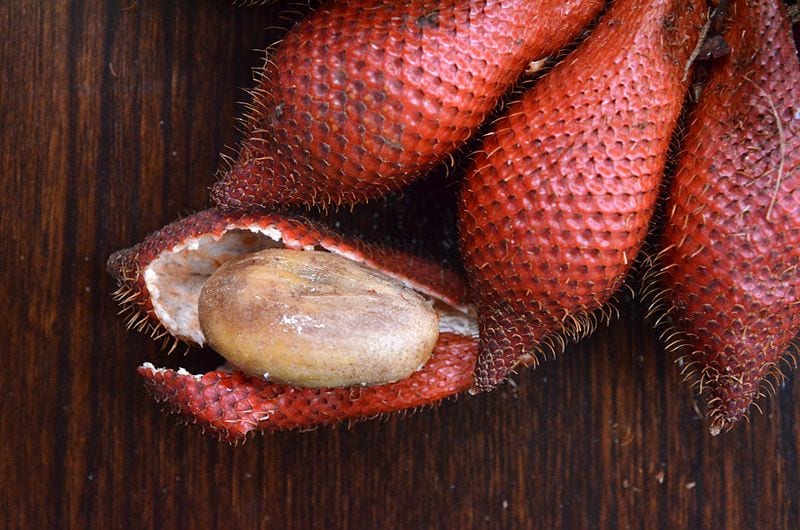
Many people get confused and think Sala is a snake fruit as it is very similar, their harvest season is even the same. But actually, these fruits are not exactly the same. Both are in the Salacca family which has a unique appearance – the oval shape and reddish-brown peel looking like a snakeskin. However, the Sala’s skin is covered by soft hair, is longer and thinner. Also, it has more flesh than snake fruit. However, both are tasty! There is the soft flesh inside which has a unique sweet and slightly sour tastes. Besides eating fresh, Sala is also served as a dessert – Sala Loy Kaew (Sala in syrup with ice), very refreshing!
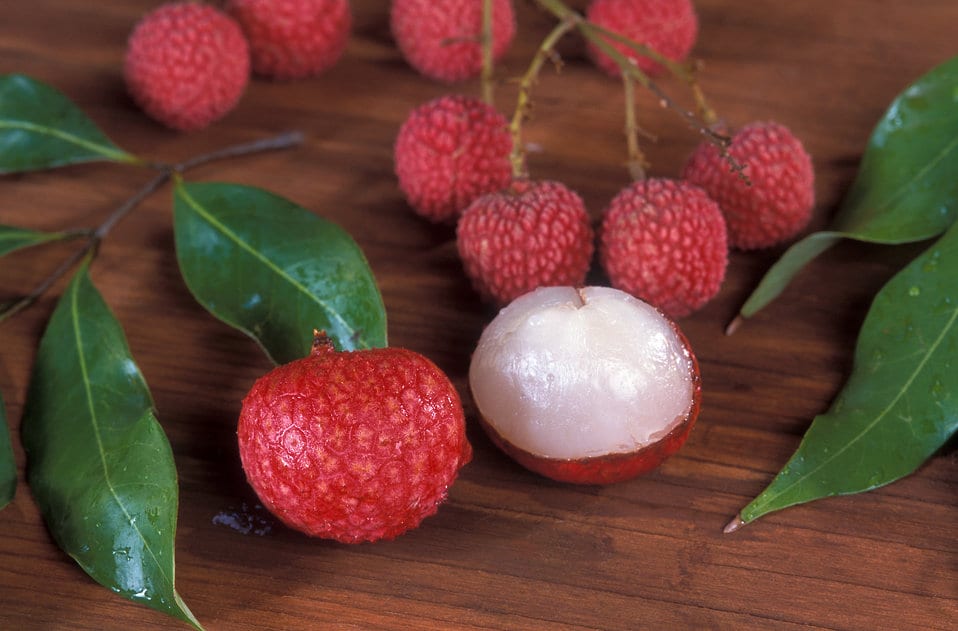
Ping pong ball sized fruit with unique sweet and sour flavour also pretty juicy. It has bright red skin is soft and easily removed by the thumbs breaks. Inside the skin is a white flesh contained a big seed (not edible). Lychee is available only a few months a year but often canned and is common to find it as drinks – very recommend lychee shake! or served as desserts.
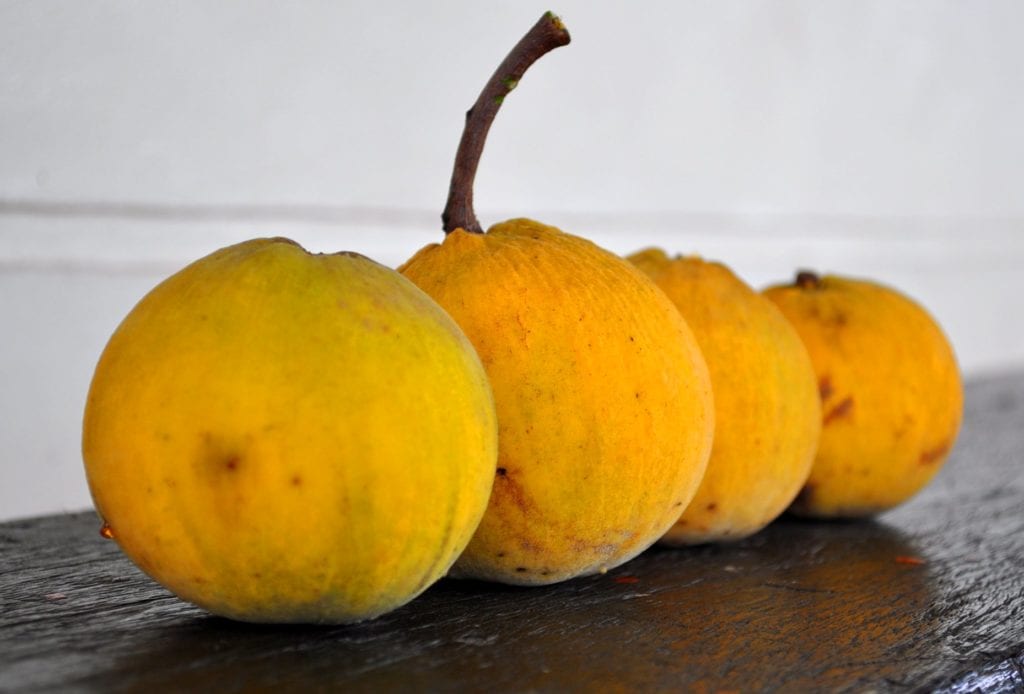
Santol is the fruit that both skin and flesh are edible. Its skin tases slightly sour and sweet while the flesh is creamy and sweet. Can be eaten fresh, used as an ingredient in foods, pickled, and as a dessert. Its appearance is round, green when raw and turns to light yellow when ripe, as big as a grapefruit (some species might be bigger), and quite heavy. Inside is white spongy flesh covering big brown seeds. The challenge is it’s pretty difficult to separate the flesh from the seeds. Gnawing and sucking skills are required. Santol in the past is mostly found in the southern part of Thailand but currently, it can be found throughout the country as it can grow in every kind of soil.
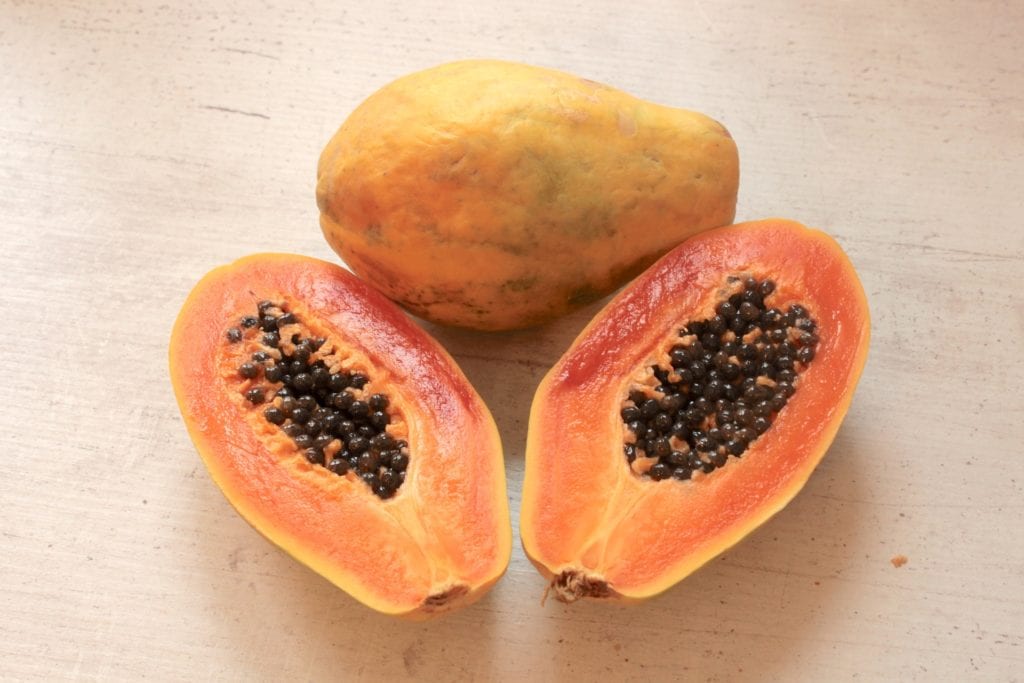
One of the much-loved fruits among locals available year-round (best between March and June). Also rich in Vitamins C and A and good for the excretory system. Thais like to eat both unripe – green and pretty hard flesh, and ripe – yellow-orange flesh, which is very soft, papayas. Green papaya is very well known as it is the main ingredient in Som Tum – papaya salad, a famous Thai dish. While the yellow papaya is eaten fresh and as a smoothy mixed with fresh lime juice.
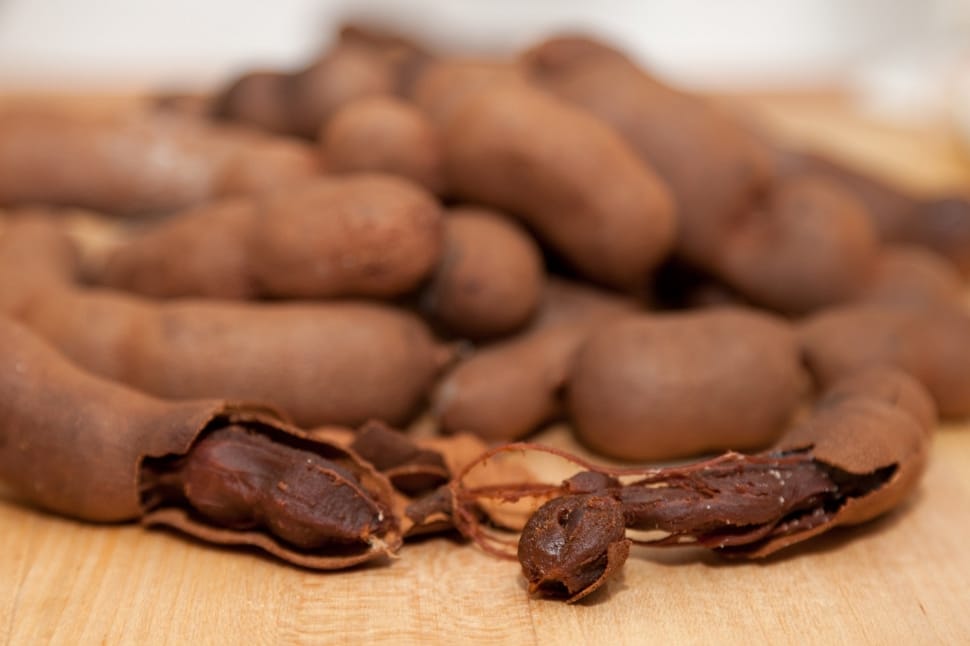
One of the essential ingredients in Thai cuisine. There’re two types of Tamarinds, sour tamarind, and sweet tamarind. They both look exactly the same with a fragile soft brown color shell, pod-like shape, and curved. When you crack open the shell, you’ll see sticky brown pulp covering black seeds. Sour tamarind is mostly used for flavoring many Thai dishes as it gives natural sour flavour which is better than lime. Examples of dishes are Tom Yum Goong and Pad Thai.
The other type is sweet tamarind (known as Makham Wan – wan means sweet, in Thai), normally eaten fresh and as a snack as the flesh is tasty, slightly sticky and fun to chew. The famous snack is tamarind (both sour and sweet) sparkle by white sugar. Moreover, tamarind is also famous for a body scrub. Sour tamarind can be found all over Thailand, but sweet tamarind is only can be grown in certain provinces especially Phetchaboon where harvest festivals annually take place. The harvest season is from November to February.
Which are your favourite Thai fruits? Let us know in the comments!
At Expique our mission is to help people discover the real Bangkok and the local cultures. We do this through a range of experiences including Food Tours, Walking Tours and Tuk Tuk Tours
If you love food as much as us,
you will love our food tours in Bangkok
Subscribe to Our Newsletter
Subscribe to our newsletter to receive monthly news and tips about exploring Bangkok.